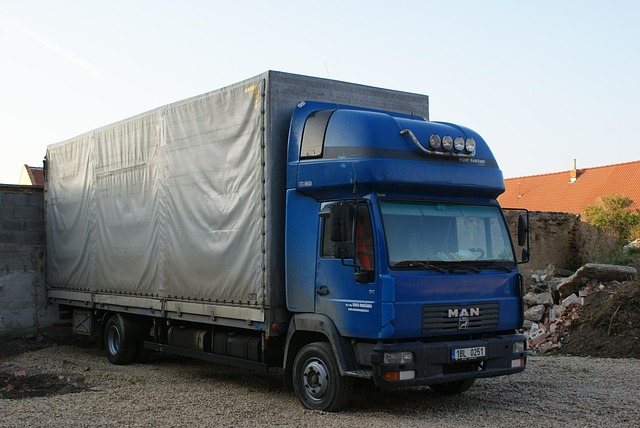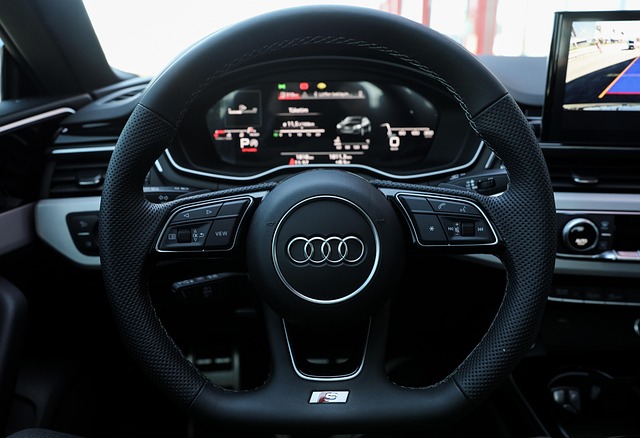Looking to register your car in California? Navigating the process can seem daunting, but with the right preparation, it’s straightforward. First, understand the state’s requirements for registration, which include providing proof of insurance and passing a vehicle identification number (VIN) check. Gather essential documents like your VIN, title, and ID. Then, either complete the process online or visit a DMV office. Both methods require accurate information input during the VIN verification step. After approval, pay fees and receive your official registration certificate.
- Understand the Requirements for Car Registration in California
- Gather Necessary Documents for VIN Verification
- Perform Vehicle Identification Number (VIN) Check
- Complete the California Car Registration Process Online or In-Person
- Pay the Required Fees and Receive Your Registration Certificate
Understand the Requirements for Car Registration in California

Before registering your car in California, it’s crucial to understand the requirements and processes involved. One key step is ensuring your vehicle meets all safety standards and emissions regulations set by the state. Every car must undergo a thorough inspection to verify its condition and identify any potential issues. This process includes a comprehensive vin verification (Vehicle Identification Number) check to ensure the vehicle’s history aligns with what’s declared by the owner.
Additionally, you’ll need to provide specific documentation, such as proof of ownership, identification, and insurance. A mobile vin inspection or vin inspection performed by an authorized agent can streamline this process, ensuring your car is ready for California’s registration requirements without any delays.
Gather Necessary Documents for VIN Verification

Before you can register your car in California, you’ll need to gather several crucial documents for VIN (Vehicle Identification Number) verification. This process ensures that your vehicle meets all legal standards before it’s given a registration stamp. One key step is acquiring a valid and accurate VIN from your vehicle, which can be found on the dashboard or the driver-side door post. Additionally, prepare important papers like your car’s title, current registration (if applicable), and proof of insurance.
For a smoother process, consider using a mobile vin verifier or scheduling a vin inspection with a professional service. These options offer convenient and accurate VIN checks, especially if you’re dealing with an older vehicle or one that has been recently transferred to California from another state. A mobile vin inspector can come to your location for a quick and efficient verification, which can then be used to expedite the registration process at your local Department of Motor Vehicles (DMV) office.
Perform Vehicle Identification Number (VIN) Check

Before you begin the registration process, it’s crucial to perform a Vehicle Identification Number (VIN) check. This step is essential for ensuring that the vehicle you intend to register is legitimate and has not been reported stolen or has any outstanding issues. A VIN inspection verifies the vehicle’s history, including its previous owners, maintenance records, and any accidents or damage.
Consider using a mobile vin verifier to streamline this process. These tools allow you to quickly and easily conduct a vin verification right from your smartphone or computer. By comparing the provided VIN with databases containing millions of records, a mobile vin inspection can offer valuable insights into a vehicle’s background, giving you peace of mind before committing to registration in California.
Complete the California Car Registration Process Online or In-Person

You have two options to complete the California car registration process: online or in-person. Both methods require you to gather essential documents and information, including proof of insurance, vehicle ownership, and identification. Online registration is typically faster and more convenient, allowing you to submit all necessary paperwork digitally through the California Department of Motor Vehicles (DMV) website. This process includes a step for vin verification, where you’ll need to provide your Vehicle Identification Number (VIN) to ensure the vehicle’s authenticity.
Alternatively, visiting a DMV office in person is a more traditional approach. Here, you’ll engage with a representative who will guide you through the registration process and conduct a vin inspection to verify the vehicle’s details. This method might take longer due to waiting times but offers immediate feedback and support if any issues arise during the registration.
Pay the Required Fees and Receive Your Registration Certificate

After completing your vehicle’s registration application, it’s time to pay the necessary fees. In California, this includes a registration fee and a vehicle identification number (VIN) verification charge. The VIN is a unique code that identifies your car, and its verification ensures accuracy in the registration process. You can opt for a traditional VIN inspection at a designated center or choose a convenient alternative with a mobile VIN inspector.
The staff will guide you through the payment process, which typically involves cash, credit card, or debit card transactions. Once the fees are settled, they will provide you with your Registration Certificate, officially registering your vehicle in California and allowing you to hit the road legally.
Registering a car in California is a straightforward process, especially with the right preparation. By understanding the requirements, gathering essential documents for VIN verification, and completing the registration either online or in-person, you can ensure a smooth experience. Don’t forget to pay the necessary fees and receive your registration certificate, marking the successful conclusion of your vehicle’s registration journey.
